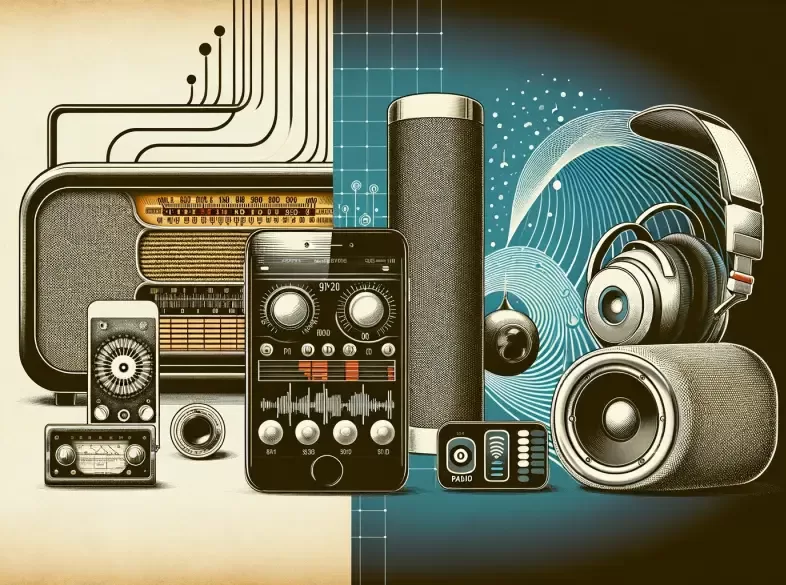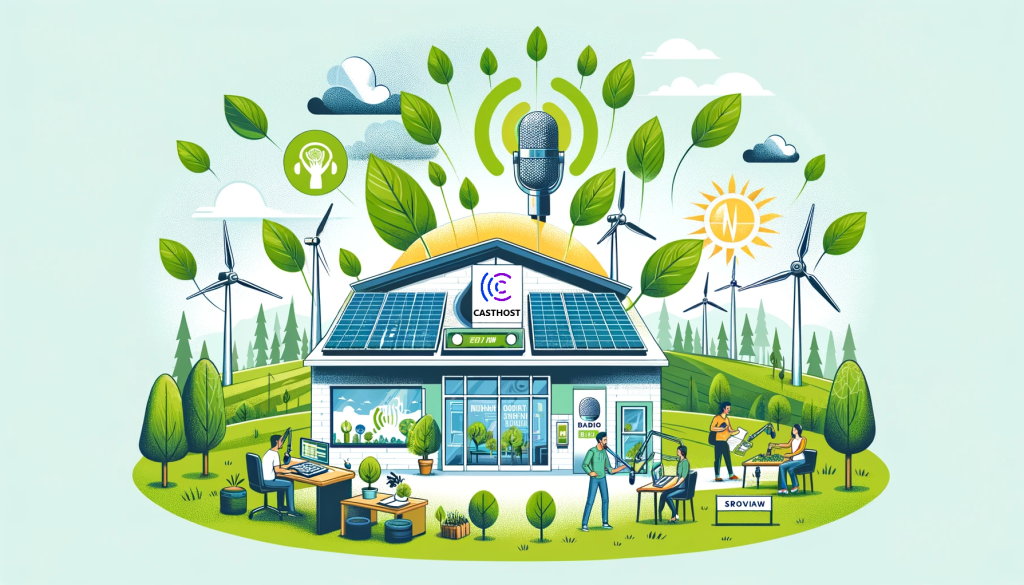Radio Revolution: Embracing the Digital Transformation

Table of Contents
Introduction: The Ever-Evolving World of Radio
Radio has been an integral part of our lives for over a century, constantly evolving to adapt to new technologies and listener preferences. From its humble beginnings with simple AM/FM transmissions, radio has now entered a digital renaissance. The ‘Radio Revolution’ is not just a phrase but a phenomenon, representing the seismic shifts caused by digital innovation. This article aims to explore these transformations, understanding how they are redefining the very essence of broadcasting and connecting us in more personalized and innovative ways.

The Rise of Digital Platforms
The Radio Revolution has been significantly driven by the rise of digital platforms, transforming traditional broadcasting methods, extending its reach and accessibility far beyond traditional boundaries. This pivotal shift has not only expanded the listener base globally but also introduced a new dynamic in content delivery and consumption. For instance, online streaming services have enabled listeners to access radio from anywhere in the world, breaking the geographical limitations of traditional radio. This transition challenges broadcasters to continuously innovate, as they now compete in a vast digital landscape where staying relevant demands agility and a keen understanding of evolving digital trends.
Personalization and AI in Radio
In this digital era, a key facet of the Radio Revolution is the personalization revolution in radio, powered by advanced data analytics and artificial intelligence. These technologies enable broadcasters to offer customized listening experiences, from playlists that adapt to individual tastes to targeted advertising that resonates with specific audiences. Such personalization has significantly increased listener engagement and loyalty. For example, AI algorithms can analyze a listener’s preferences and suggest content that aligns with their interests, thereby creating a more immersive and satisfying listening experience.
Smart Speakers and Voice-Activated Devices
The integration of smart speakers and voice-activated devices has transformed the radio listening experience, making it more intuitive and integrated into our daily lives. These devices have enabled users to access their favorite radio stations and podcasts with simple voice commands, offering a seamless and hands-free experience. This advancement represents a significant leap in how we interact with radio content, moving from manual tuning to voice-activated, context-aware interactions. The potential for further integration, such as personalized news updates or interactive radio shows, is immense and could redefine the future of radio broadcasting.
Innovative Content and Collaborations
The digital age has ushered in an era of unprecedented creativity in radio content and collaborations, a key component of the ongoing Radio Revolution. This transformative phase is marked by a growing trend of partnerships between radio stations and artists, influencers, and even other media platforms, leading to the creation of unique and diverse content. For example, exclusive interviews, live podcast series, and interactive talk shows have become popular, offering listeners a more engaging and varied audio experience. Such innovations are at the heart of the Radio Revolution, blending traditional radio with modern content forms to attract new audiences and reinvent the listening experience for the digital age.
Local Content and Community Engagement
Despite the global reach of digital radio, local content remains its beating heart. This hyper-localized focus allows radio stations to foster stronger connections with their communities, offering content that resonates on a more personal level. Local news, community events, and region-specific music cater to local tastes and interests, ensuring that radio continues to play a vital role in community building and engagement. This blend of global reach and local relevance is a unique strength of radio in the digital era, offering a platform for diverse voices and stories.
Sustainability and Social Responsibility

In an era where sustainability and social responsibility are increasingly important, radio stations are stepping up to play a pivotal role. Many are adopting eco-friendly practices, such as using renewable energy sources for broadcasting and digital distribution methods that reduce carbon footprints. Additionally, they are embracing social causes, from promoting local charities to addressing global issues like climate change and social justice. This shift reflects not just a growing societal consciousness but also aligns radio broadcasters with the values of a socially-aware audience, ensuring their relevance and resonance in a changing world.
Challenges in the Radio Revolution
Navigating the radio revolution involves balancing innovation with traditional broadcasting values, a delicate act. Economic constraints and technological barriers, like constant software and hardware upgrades, pose significant challenges. Solutions like CastHost provide advanced radio hosting services, easing the management and upgrading of broadcasting technologies. This enables broadcasters to focus on content and innovation, free from technical complexities. Additionally, competition from other digital media platforms demands continuous innovation and unique audience engagement strategies. Overcoming these challenges is vital for radio’s survival and growth in the digital age.
Case Studies in the Radio Revolution
Examining case studies of successful digital radio models offers invaluable insights. These examples showcase how certain stations, embracing the spirit of the Radio Revolution, have seamlessly integrated podcasts into their offerings or utilized social media platforms to enhance listener engagement, providing practical strategies for others in the industry. Conversely, learning from the failures or challenges faced by some in this digital transition can offer lessons on what to avoid and how to pivot effectively in this dynamic landscape of the Radio Revolution.
The Future of Advertising in Radio
The digital transformation in radio is also reshaping advertising strategies. With the ability to gather more precise listener data, advertisers are now able to target their messages more effectively. The emergence of programmatic advertising allows for real-time bidding and placement of ads, making advertising more efficient and cost-effective. Additionally, the rise of branded content and sponsorship opportunities in radio programming offers new, creative ways for brands to engage with listeners. To delve deeper into innovative ways to monetize your internet radio station, check out our detailed blog post.
Regulatory Environment and Policy Changes
Navigating the evolving regulatory landscape is a crucial aspect of adapting to the Radio Revolution for broadcasters. As digital broadcasting, a key component of the Radio Revolution, continues to grow, it faces new regulations and policy changes that aim to ensure fair competition, protect consumer privacy, and maintain broadcasting standards. Staying ahead of these changes and understanding their implications is essential for broadcasters to operate effectively and responsibly in the digital age.
Global Trends in Radio Broadcasting
A global perspective reveals diverse approaches to the radio revolution. In some regions, there is a rapid embrace of digital technologies, while in others, traditional broadcasting remains strong. Exploring these trends can offer a broader understanding of the global radio landscape and inspire innovative ideas. For instance, in certain European countries, digital radio has become the norm, while in parts of Asia, community radio continues to play a significant role.
Audience Preferences and Demographics
Understanding the new-age listener is key to staying relevant. Today’s audience is diverse, tech-savvy, and has varying preferences. Catering to this diversity requires radio broadcasters to be more adaptable and inclusive in their content and delivery methods. Analyzing listener data to understand demographics, preferences, and listening habits can help tailor content and ensure that it resonates with the intended audience.
Building a Sustainable Business Model
In the digital era, developing a sustainable business model is vital. This involves exploring new revenue streams, such as subscription models, partnerships, and digital content monetization. It also means investing in technology and talent that can drive innovation and attract a wider audience base. Balancing these investments with operational costs is key to ensuring long-term success and growth.
Conclusion: Looking Ahead
The ‘Radio Revolution’ is an ongoing journey marked by continuous adaptation and innovation. As we look towards the future, the ability of radio to embrace change, harness technology, and connect with its audience on a deeper level will dictate its relevance and success in the digital age. The future of radio is not just about surviving the digital transformation but thriving in it, by being agile, listener-centric, and innovative.
 Home
Home